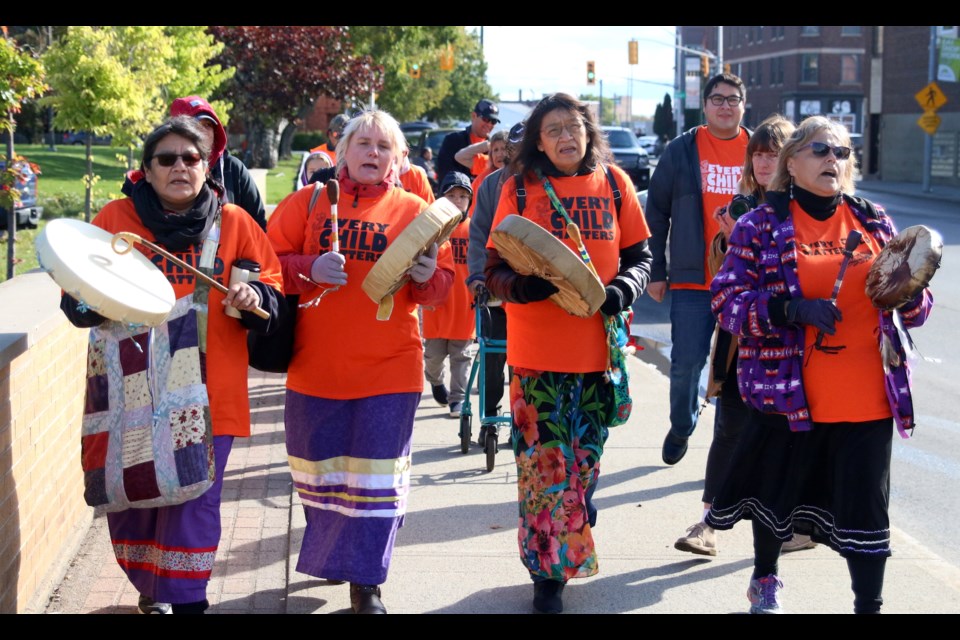THUNDER BAY - After being taken from his home in Long Lake 58 First Nation when he was only seven-years-old and sent to St. Joseph’s Residential School in Fort William, Allan Towegishig still remembers the feelings of sadness, loneliness, and anger he felt more than 65 years ago.
Talking about those feelings and experiences today has helped Towegishig find a sense of healing, and he is hopeful that continuing to bring his experiences, and the experiences of countless other residential school survivors out in to the open with displays of orange shirts will allow for more healing and more awareness of what happened across the country and right here in the city of Thunder Bay.
“It’s very important to be able to talk about it,” he said. “When other people hear you say that, the first time it is hard, but the more you talk about it, the more you tell people, the more healing you are going to have, especially the young people. They are very important to our healing.”
Towegishig was one of the residential school survivors surrounded by a sea of orange during the Indian Residential School Awareness Walk as part of Orange Shirt Day on Sunday.
Nearly 200 people walked from Patterson Park to the former site of the St. Joseph’s Residential School at what is now Pope John Paul II Elementary School on Franklin Street.
The local walk was part of a national movement known as Orange Shirt Day, which began in Williams Lake, B.C. in May 2013. The legacy of the orange shirts comes from Phyllis Webstad’s story of her first day at residential school in 1973 when she was forced to remove her new orange shirt given to her by her grandmother.
“From there this movement has started to grow and we are seeing it across the country,” said Nishnawbe Aski Nation Grand Chief, Alvin Fiddler. “It’s really gratifying to see so many people at these events, not just Indigenous people, but people from across the community.”
Last Wednesday, a sacred fire was lit at Pope John Paul II Elementary School, where a residential school memorial was erected last year.
“It’s so heartwarming to see people coming, especially young people and students coming who want to learn more about what happened at these residential schools and the importance of them wanting to learn more about that part of their history.”
Fiddler added that many people in Thunder Bay might not realize that a residential school was operating in the city from 1870 right up to 1966. During its history, six Indigenous children are reported to have died while attending the school, with another 16 unaccounted for.
“Now with this campaign and this event, people are starting to realize that this whole sad legacy of residential schools and Thunder Bay was a part of that,” Fiddler said.
“A lot of the time people think far away countries, a lot of people getting slaughtered, getting run out of the country, a lot of people don’t realize it happened in their own backyard,” Towegishig added.
Towegishig attended St. Joseph’s Residential School in the early 1950s and he said while he was there the people running the school tried to “drag the Indian out of me,” adding that they had succeeded for a time.
“When I went home, I got my recovery, I got back to being an Anishnawbe person,” he said. “An Anishnawbe person is just like everybody else. I learned to get my identity back and I’m very proud to be an Anishnawbe person.”
And that pride has allowed him to share his story, as painful as it can be at times. But through sharing it, speaking about it, Towegishig is able to heal, to know who he is, but in order to accomplish all of that, people must be willing to listen.
“It feels very good,” he said. “For a long time you felt very lonely but when other people are doing it, you don’t feel alone anymore. You feel all that healing, especially our white brothers who come and support us. We are not doing it alone.”
